Cheat Sheet: High Court | Indian Polity for UPSC CSE PDF Download
Introduction
This chapter explains India’s high courts. High courts are above subordinate courts but below the Supreme Court, acting as the top judicial authority in each state. We’ll cover their history, structure, judges, independence, and powers.
High courts are key to India’s judicial system, overseeing state justice between subordinate courts and the Supreme Court. Each state has its own high court.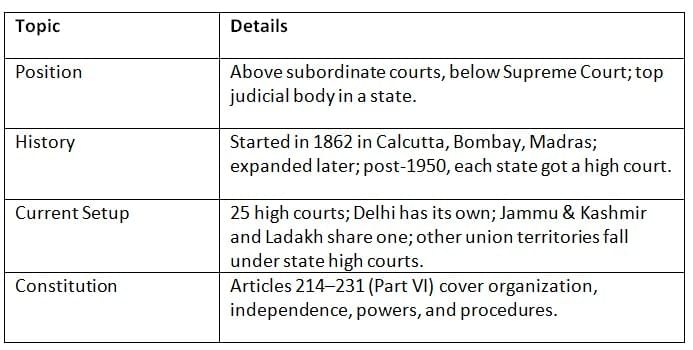
High courts are state-level judicial leaders, established since 1862, with 25 courts today managing state justice.
Composition and Appointment
High courts have a Chief Justice and judges appointed by the President, with a collegium system ensuring fair selection.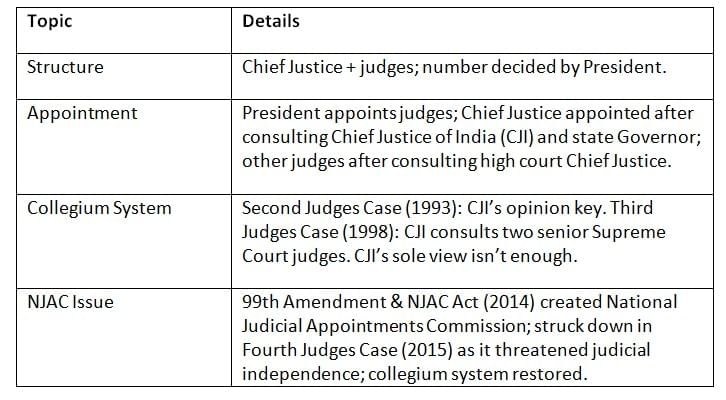 Judges are appointed by the President with judicial input, and the collegium system protects fair, independent selections.
Judges are appointed by the President with judicial input, and the collegium system protects fair, independent selections.
Qualifications, Oath, and Salaries
High court judges need specific qualifications, take an oath, and receive fixed salaries to ensure impartiality.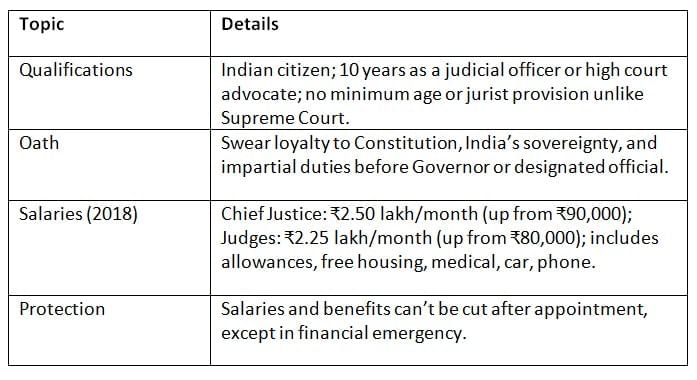 Judges must be experienced, swear impartiality, and get secure salaries to stay independent.
Judges must be experienced, swear impartiality, and get secure salaries to stay independent.
Tenure, Removal, and Transfer
Judges serve until 62, can be removed only by impeachment, and may be transferred between high courts.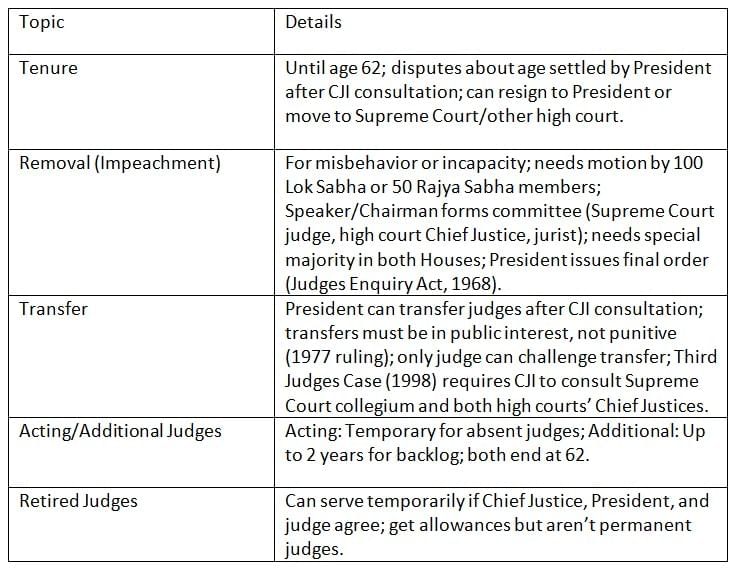
Judges have secure tenure, tough removal process, and regulated transfers to maintain fairness and independence.
Independence of High Court
High courts must be free from executive or legislative control to deliver fair justice. The Constitution ensures this through several safeguards.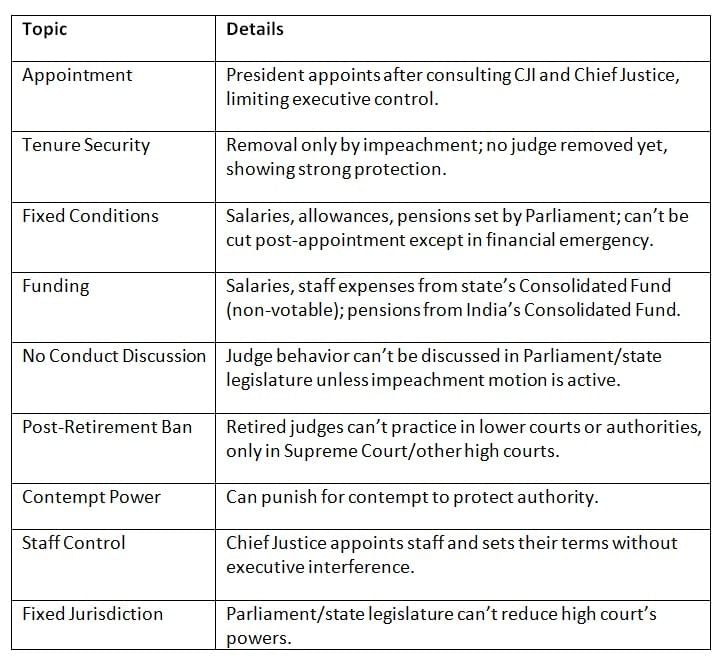 Constitutional rules like secure tenure, fixed salaries, and contempt powers keep high courts free from outside pressure.
Constitutional rules like secure tenure, fixed salaries, and contempt powers keep high courts free from outside pressure.
Jurisdiction and Powers of High Court
High courts have wide authority to hear cases, issue writs, review laws, and oversee lower courts, ensuring justice and constitutional protection.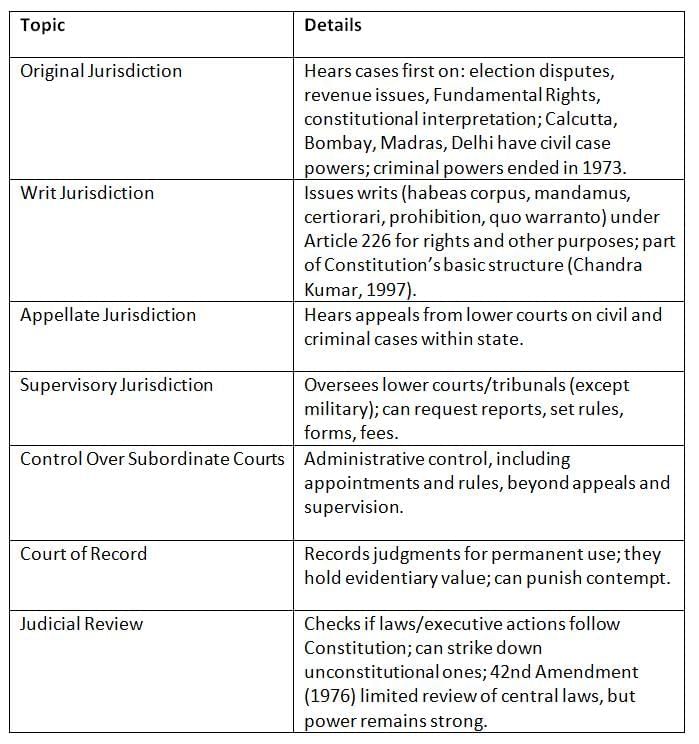 High courts protect rights, review laws, oversee lower courts, and issue writs, acting as powerful state-level guardians of justice.
High courts protect rights, review laws, oversee lower courts, and issue writs, acting as powerful state-level guardians of justice.
Timeline of Key Events
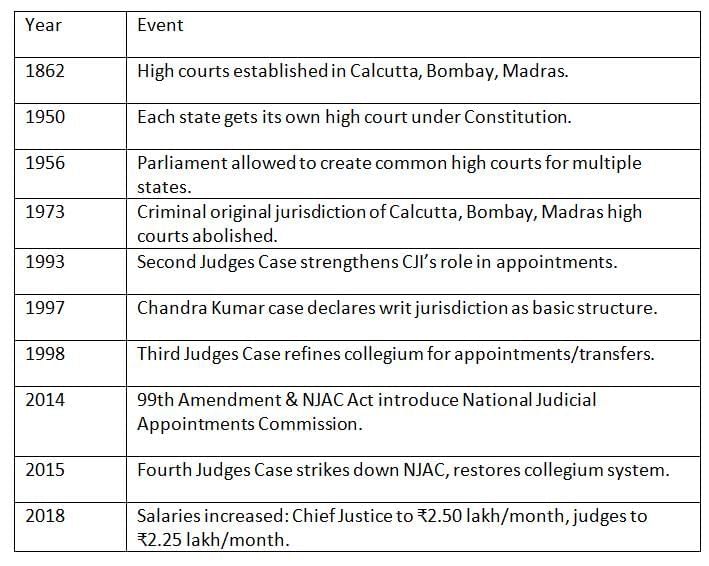
Conclusion
This chapter highlights the high court’s role as a vital pillar of India’s judicial system, overseeing state justice with independence and authority. With 25 courts, they protect Fundamental Rights, review laws, and manage lower courts under constitutional rules (Articles 214–231). Safeguards like secure tenure, collegium appointments, and contempt powers ensure impartiality. From original cases to writs and appeals, high courts uphold democracy and justice, balancing state and national interests in India’s federal framework.
|
142 videos|777 docs|202 tests
|
FAQs on Cheat Sheet: High Court - Indian Polity for UPSC CSE
| 1. What is the composition of the High Court and how are its judges appointed? |  |
| 2. What qualifications must a person have to be appointed as a judge of the High Court? |  |
| 3. What is the tenure of judges in the High Court and what are the conditions for their removal? |  |
| 4. How does the independence of the High Court get ensured? |  |
| 5. What is the oath taken by High Court judges and why is it significant? |  |
















